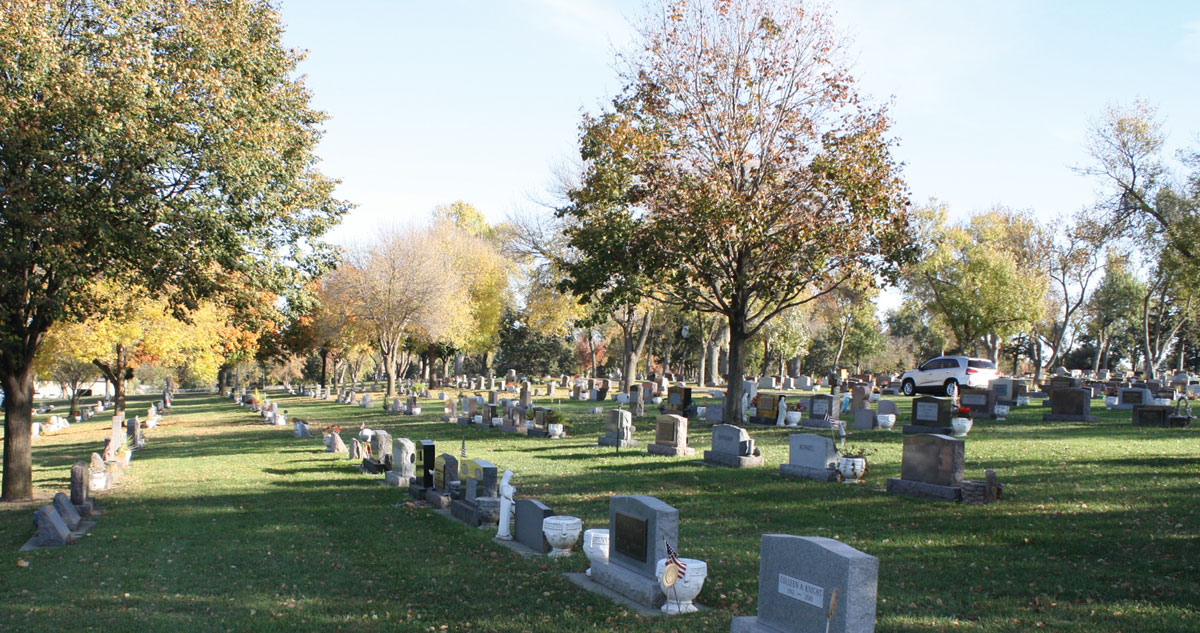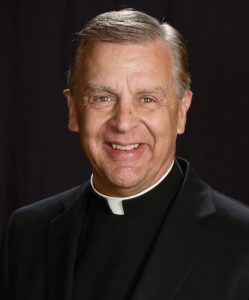
By Father Michael Wensing
Each year, I like to make two cemetery pilgrimages apart from any burials I have done during the year: one at the end of May, which is Memorial Day, and the other at the beginning of November, which begins with All Souls’ Day on the 2nd of the month. These pilgrimages are to places of my ancestors or influential people in my life who have died and await the final resurrection of the dead. I pray, I remember and I express gratitude to them and to God for their life and influence on earth.
I do this because I have faith that the dead, whether in purgatory or in heaven, are still conscious of our reality on this side of the veil of death. Thus, I also ask them to pray for me, but I especially pray for those who are still on their journey in purgatory.
Purgatory will come to an end as a reality at the end of the world and the final judgment and resurrection. So, I say it is a positive journey in the meantime to the gates of the kingdom of heaven.
Father Benedict Groeschel, CFR, in a conference for us priests once at Mt. Marty University, said: “If I died tomorrow and woke up in purgatory, I would be happy despite the pain of any purification because I know my ultimate destiny was decided—eternal life in heaven.” He proclaimed a positive attitude despite the temporal suffering of purification involved, the making of a saint before entry into heaven.
To be in heaven is to be sanctified, saintly. The logic is that we would be in a state of charity and understanding so that we can commune eternally with all the other citizens of heaven, human or angelic. And we want to commune most with Jesus Christ and be in his eternal light.
I had to correct a friend who once wished a neighbor who died that he might be, of course, in heaven, but he hoped that neighbor would be on a different planet, and they would never have to meet. The healing of purgatory should have him and his neighbor in charity and peace with each other for all eternity once in heaven.
The cemeteries I now visit also have cremated remains interred. This is a more recent development. From the beginning of Christianity, the traditional practice was earth burial of the body. It came from Jewish practice and was thought to imitate the burial of Christ and gave great respect to the body, which St. Paul said had been the temple of the Holy Spirit. St. Paul spoke of the body being sown in corruption and rising incorruptible (1 Cor 15), indicating the resurrection of the body.
Some of the early Roman pagans in the first centuries, in their hostility to the Christians and thinking earth burial was necessary for Christians to rise some day, would burn the bodies of certain Christians or leave them exposed in the open for the vultures. But the Christians affirmed that no human intervention could thwart the divine work of resurrection, and sometimes they could place a relative value to body burial.

Jesus said, “Do not be afraid of those who kill the body but cannot kill the soul; rather, be afraid of the one who can destroy both body and soul in Gehenna” (Mt 10:28). Yet, from apostolic times, Christians followed the Semitic practice of burial and, by and large, abstained from cremating their dead. But because of the relative value of body burial for future resurrection, as we mentioned above, cremation was allowed in some centuries when there were extraordinary circumstances, such as the plagues of the Middle Ages.
As the memory of ancient persecutions and disrespect for the bodies of Christians subsides in the collective consciousness of the Christian church, cremation is both allowed and, in fact, we find it increasing in practice. The Roman Catholic Church changed its policy of no burial rites for the cremains of the deceased in 1983 to allow cremation if it is not seen as a sign of disrespect for the body or corpse. It has a short rite for the cremains at funerals. The often-quoted passage from Genesis at funerals—“remember, you are dust, and to dust you shall return”—seems to fit cremation, which hastened the process.
While on assignment in parishes, I had to persuade some who opted for cremation to have their loved one buried in a consecrated or dedicated cemetery, which was not always an easy task for me. We respect the final remains in whatever form they might take, and burial or interment has been a Judeo-Christian tradition since the first century. Another reason for burial of the remains is we have a “location” for our future visits, memories and prayers like the following:
Eternal rest grant unto them O Lord. And let perpetual light shine upon them. May their souls and the souls of all the faithful departed through the mercy of God rest in peace. Amen


